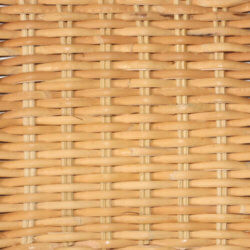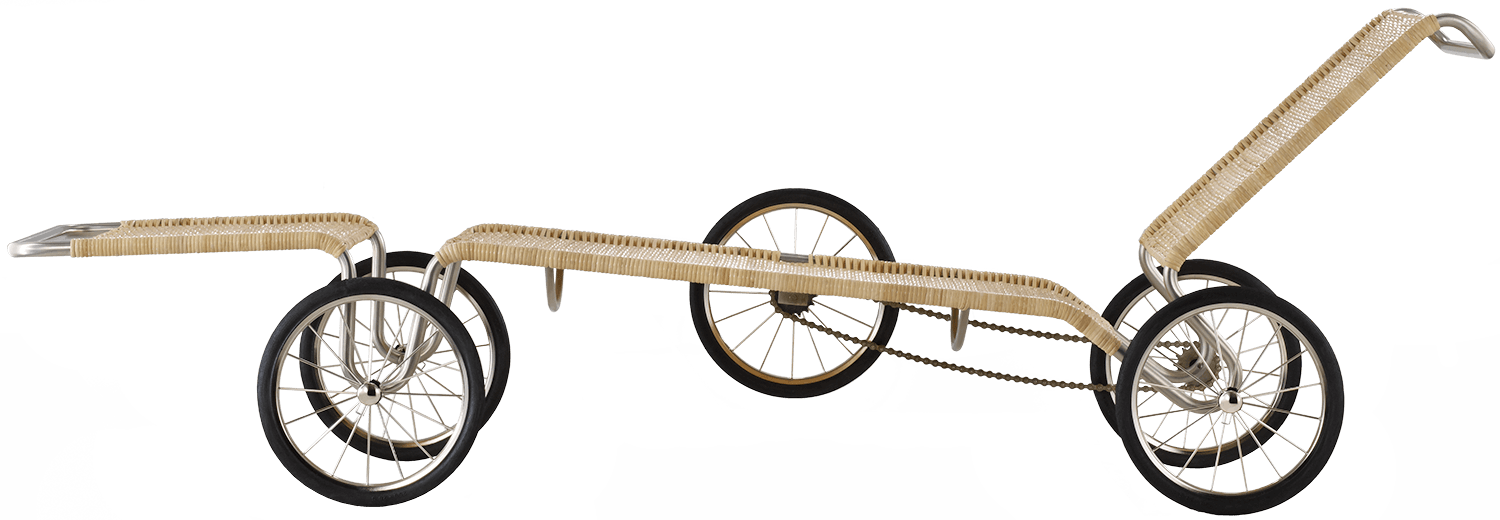
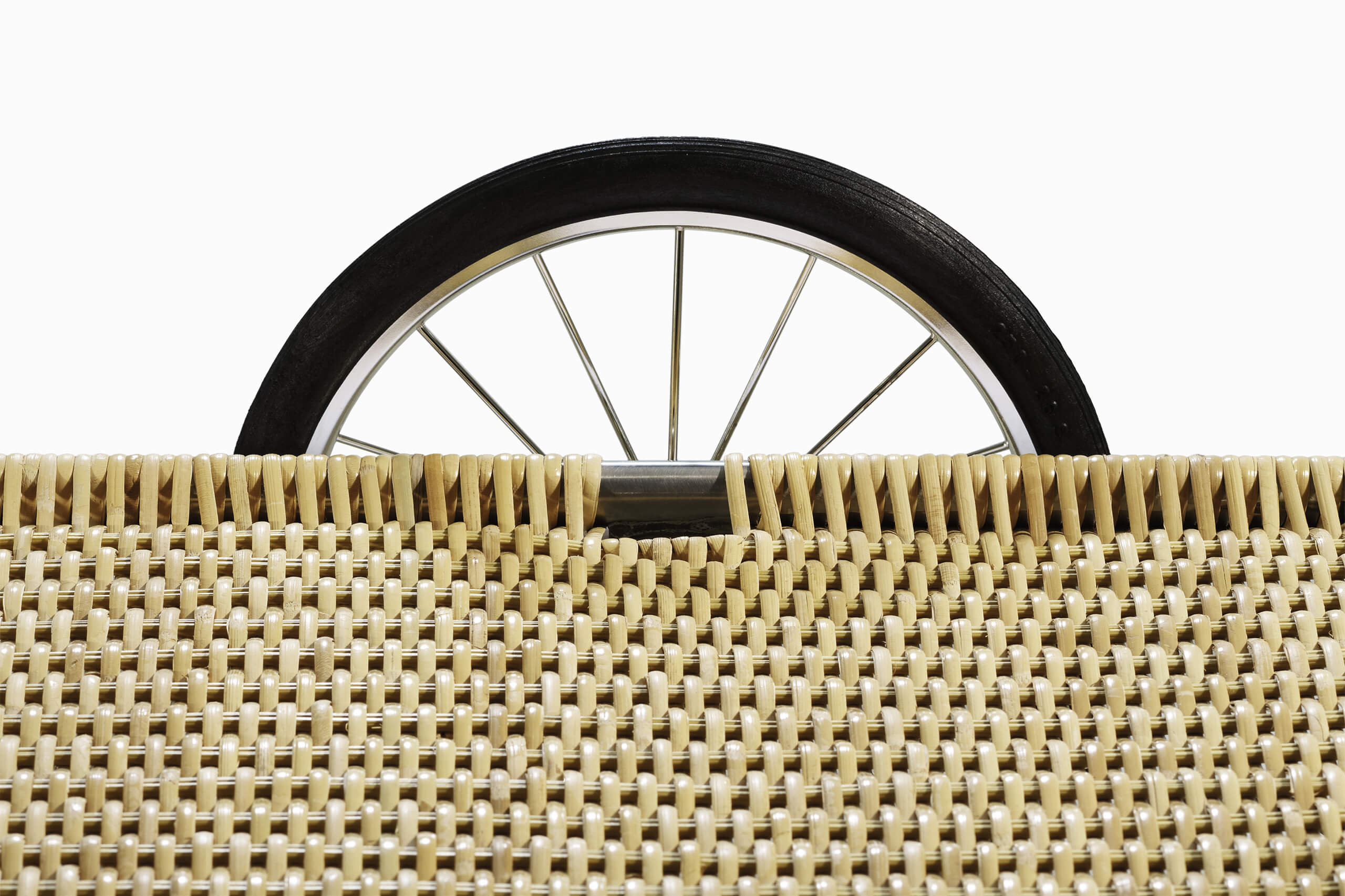
F41-E
The Mobile Manifesto
Marcel Breuer staunchly followed his principles in everything he did. The head of the Bauhaus furniture workshop already had a predilection for cycling and lightweight construction. So, he took it a step further. After the world of heavy furniture had started its decline there was no stopping him. Around 1928, Breuer sketched an idea of combining a bicycle and armchair into a lounge on wheels – what a wonderfully crazy inspiration! For over half a century it was never realised, until TECTA added the mobile lounge to its product range in 1984, as an outdoor vehicle that allows you to lie back on its wicker surface in the open air and follow the light reflected by its metal frame.
+ read more
- einklappen
The result was not a banal lounge on wheels, but rather a mobile manifesto. An ethereal sculpture, almost too beautiful to sit on. While futurism worshipped speed in martial words: “A racing car, its frame adorned with great pipes, like snakes with explosive breath …,” Breuer’s approach to movement was almost meditative. And he created a piece of furniture that abolishes the polarity between relaxation and motion.
Anyone who sees the delicate wicker surface of the lounge, its matt stainless steel frame and hard-wearing Bauhaus straps, will discover a mobile sculpture for domestic use that looks perfectly contemporary.
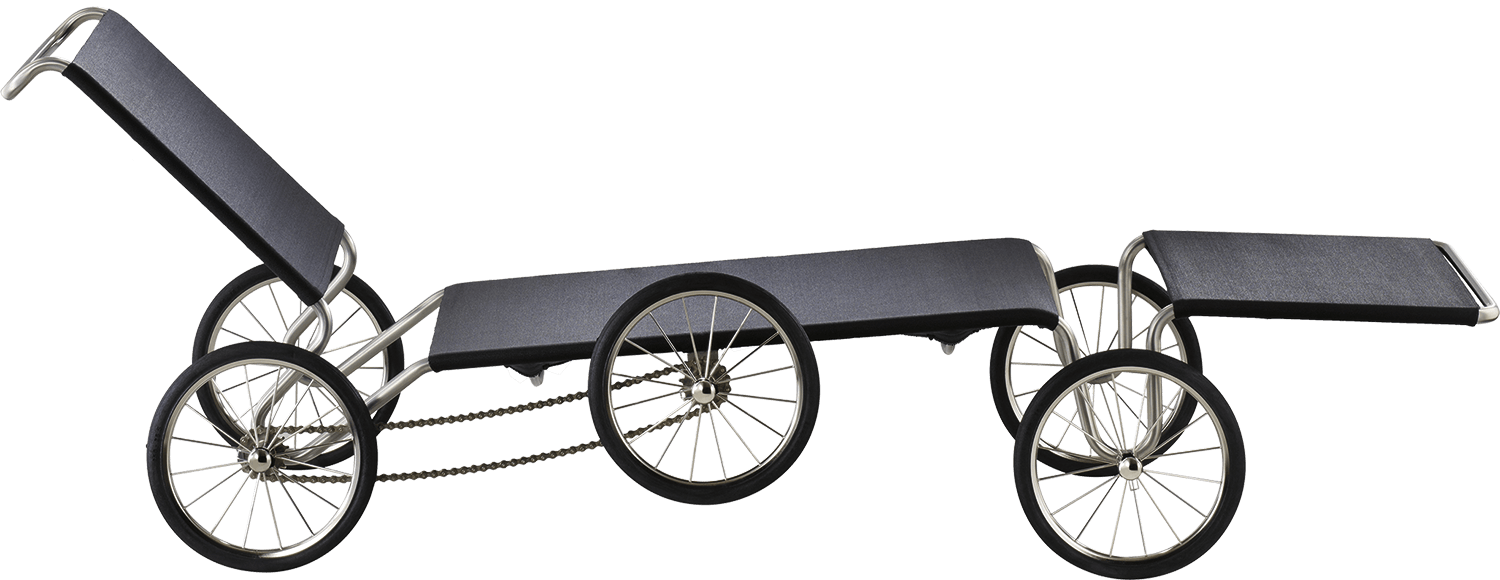
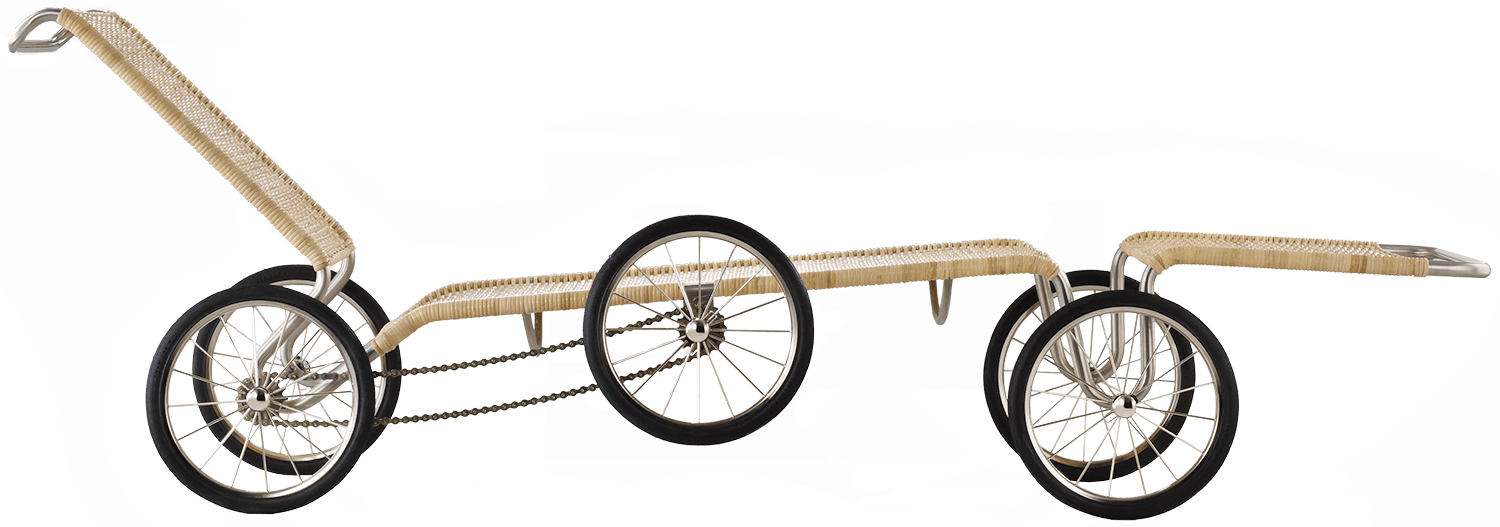
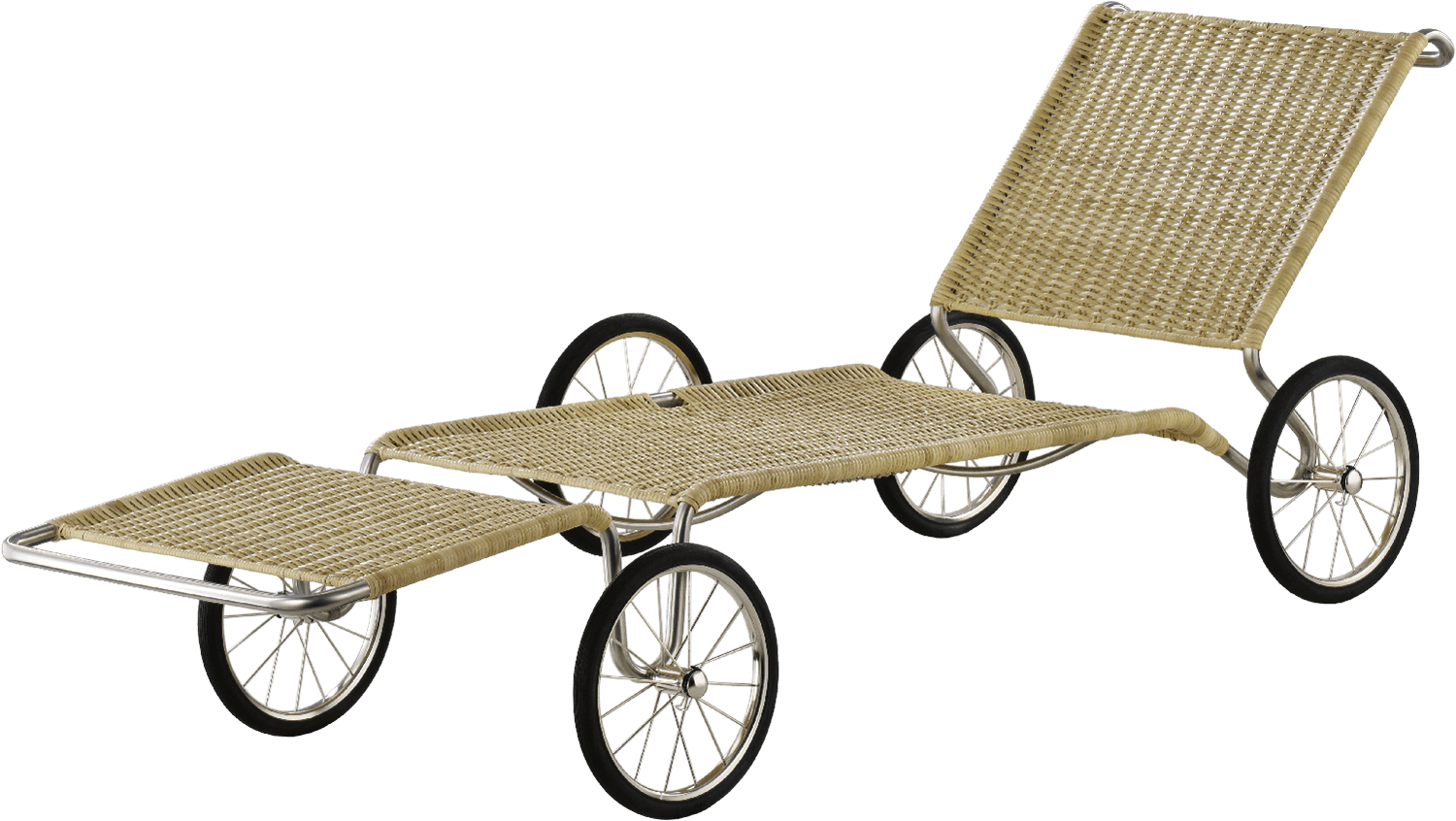

F41-E: True to the original and with license.
How can you recognize the original Bauhaus reeditions from Tecta? The Bauhaus Archive in Berlin only approves true-to-work and licensed reeditions of the original Bauhaus models. These are marked with Oskar Schlemmer’s signet, which he designed for the Weimar State Bauhaus in 1922. Even today, our Bauhaus models are based exactly on the proportions of the originals.
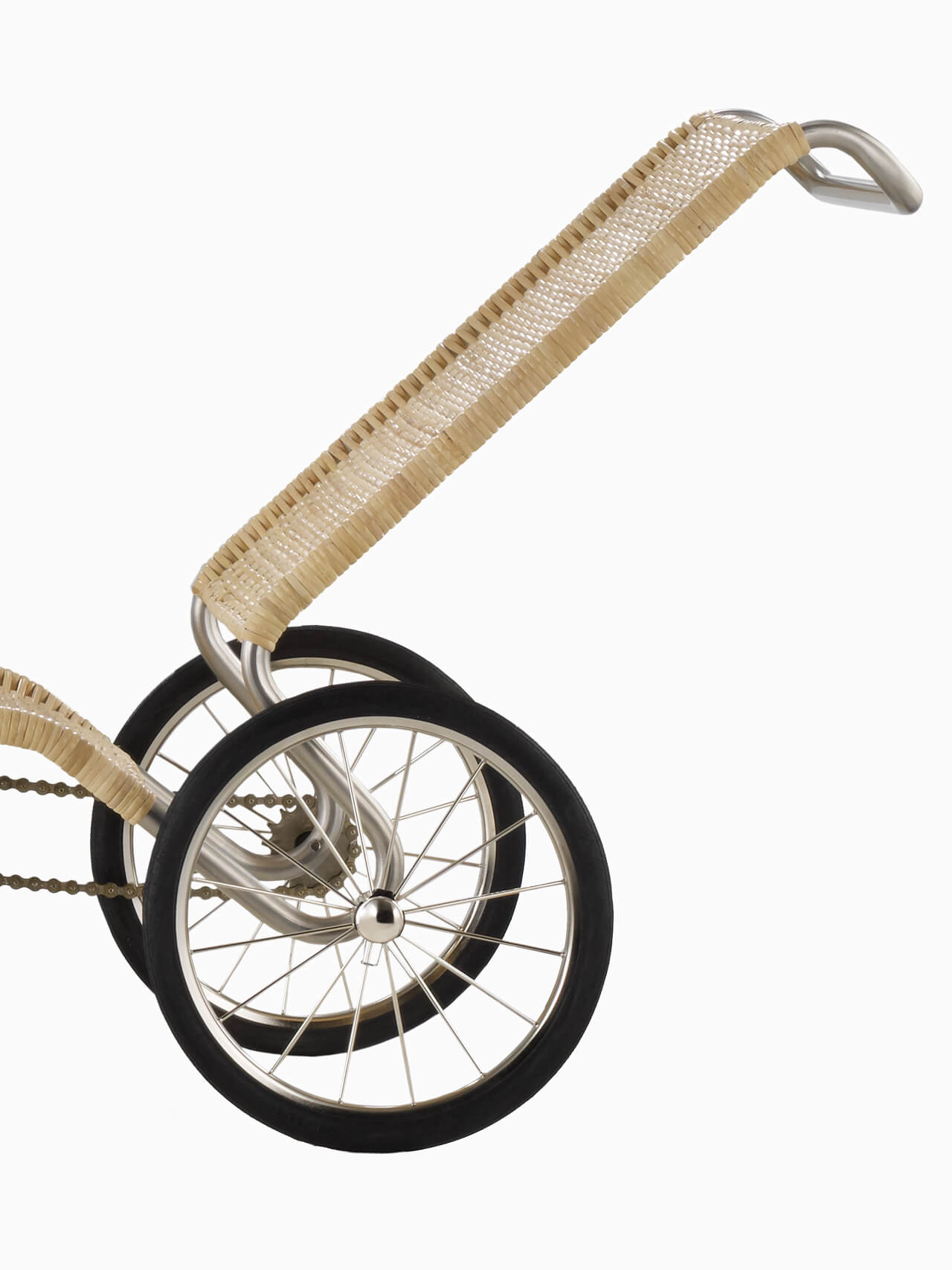
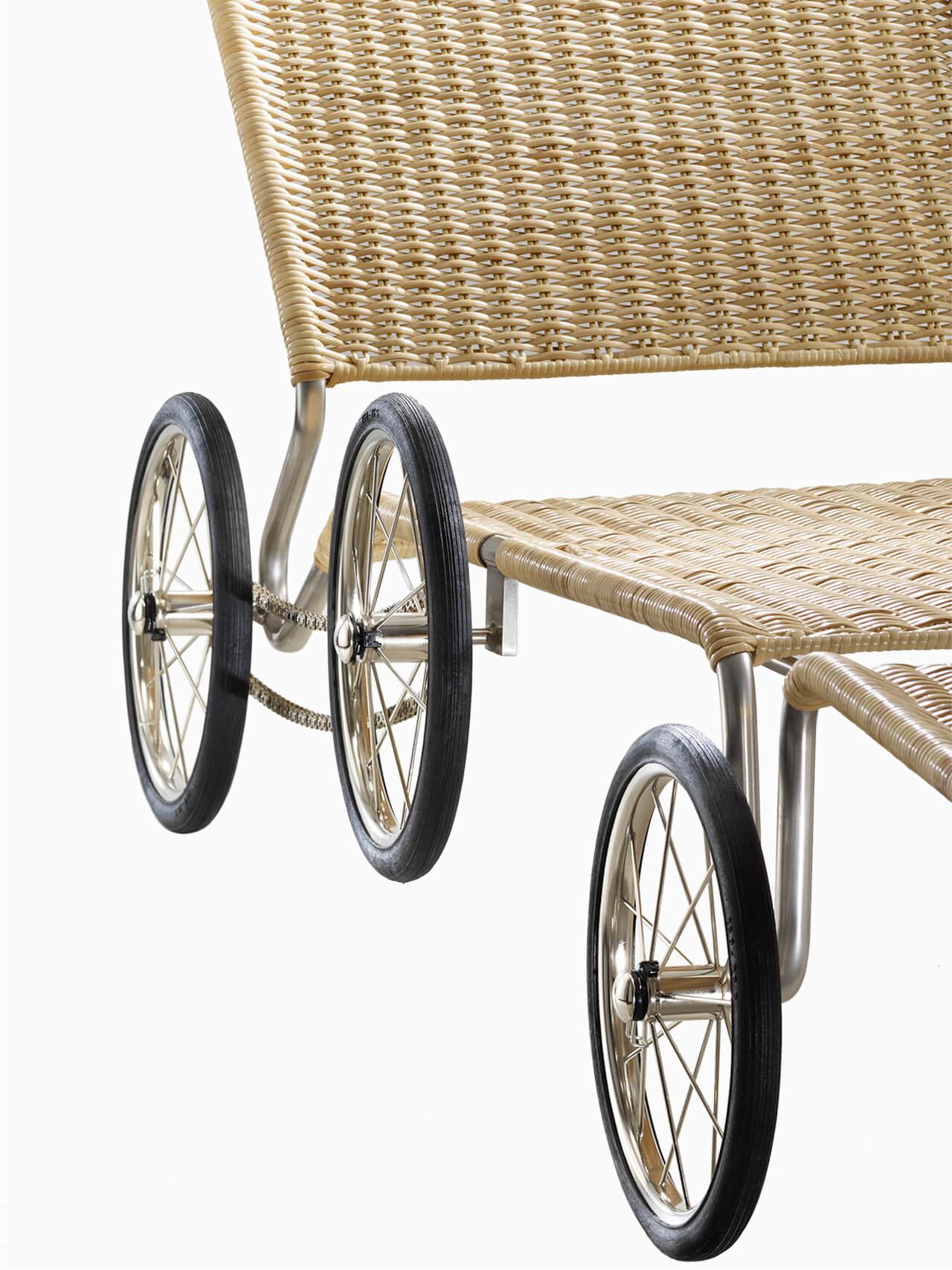

The man who unlocked the potential of tubular steel.
+ read more
- einklappen
Marcel Breuer completed an apprenticeship in the carpentry workshop at the Bauhaus between 1920 and 1924. After a brief stint in Paris he took over the workshop at the Bauhaus in Dessau in 1925. In 1925/26 Breuer created his first articles of tubular steel furniture.
»I have specifically chosen metal for these pieces of furniture to achieve the characteristics of modern spatial elements just described. The heavy, pretentious upholstery of a comfortable armchair has been replaced by tightly stretched fabric surfaces and a few easily dimensioned, springy, cylindrical brackets.« Writing on Breuer’s impact, Peter Smithson notes that – among the second generation of Modernist designers – only Breuer succeeded in capturing the spirit of his age in his furniture.
